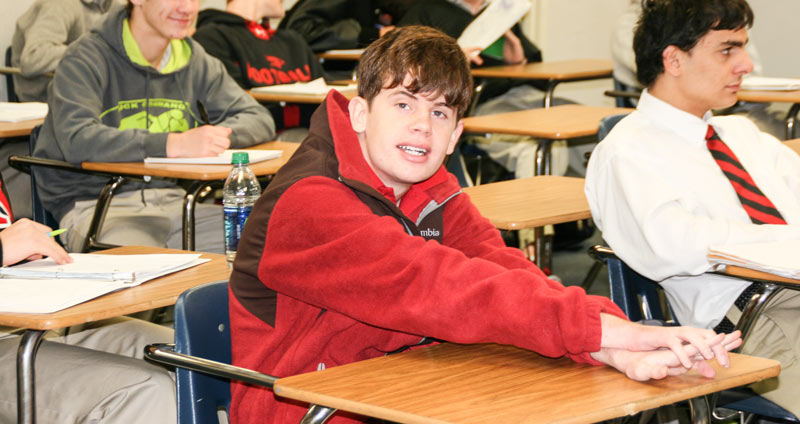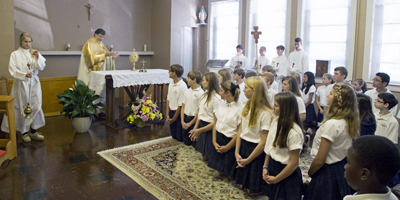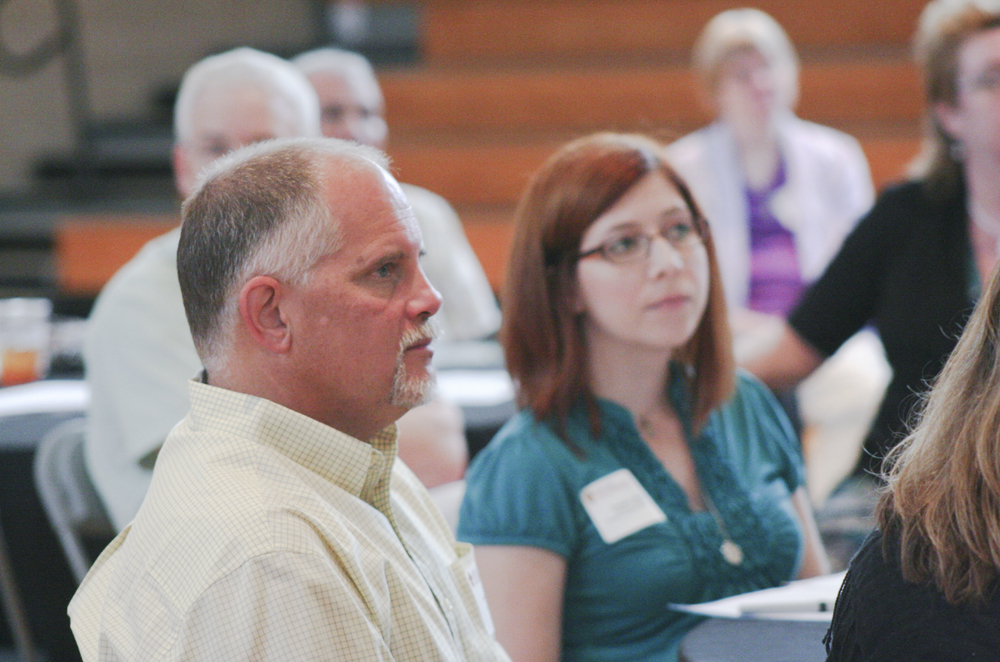
SAN DIEGO—The health of the nation’s Catholic schools is mixed, their leaders announced March 29, noting that they served nearly 24,000 fewer students than last year although 14 new schools opened across the country.
They gave an assessment of the schools on the opening day of the National Catholic Educational Association’s annual convention, being held in San Diego through March 31. The leaders outlined some of the steps they are taking to support the growth in Catholic school education, including fundraising for tuition assistance, marketing, and strengthening academic and faith formation.
Nearly 5,000 teachers and administrators attended instructional and professional development workshops on topics that included admission, education trends, finance management, formation programs, Hispanic outreach, instructional strategies, leadership, public policy, STEM (science, technology, engineering and mathematics), and application of technology. The conference and expo was presented in partnership with the Catholic Library Association.
“There’s a strong demand and enthusiasm for Catholic schools,” noted Bishop George V. Murry of Youngstown, Ohio, chairman of the NCEA board of directors.
Speaking at an opening news conference, he said that around 27 percent of schools had waiting lists.
The schools continue to face significant challenges, however.
Closings and consolidations led to a total loss of 43 schools this academic year, announced Sister Dale McDonald, a Sister of the Presentation of the Blessed Virgin Mary and NCEA’s director of public policy and educational research. She outlined the annual report on the schools, enrollment and staffing.
Total enrollment in the 2015-2016 academic year stood at almost 2 million students, a 1.2 percent decrease from the previous year, she said, adding that the figure was a far cry from the peak of 5.2 million in the 1960s. The findings of the annual report on the 6,525 schools she presented included:
- Catholic schools saved state and local education agencies more than $24 billion per year, based on the per pupil cost of public education, which is $12,000 annually.
- Catholic school student-to-teacher ratios remain good compared to public schools. It’s 13-to-1 in Catholic elementary schools and 11-to-1 in secondary schools.
- Eighty-five percent of Catholic school graduates attend four-year universities, compared to 38 percent from public schools.
- Sixteen percent of students in Catholic schools are Hispanic.
- Seventy-eight percent of Catholic schools have students with mild to moderate disabilities.
“We often hear that Catholic schools don’t do disabilities,” Sister McDonald said. “We try to care for all students and have made significant progress in that area.”
It’s the challenge of schools and the association itself to “spread the good news about a Catholic school education” using media and social media, said Thomas Burnford, NCEA’s interim president.
In the public arena, he said, it’s important to build on legislation that provides some form of financial assistance to parents to help them choose a private or faith-based education for their children. To date, 27 states and the District of Columbia do so, enabling 1.5 million families to exercise that choice nationwide, he said.
Burnford said the association is working on retaining its current leaders, while doing effective succession planning and strong formation in Catholic identity.
He and the other leaders who spoke said it was important to communicate to the broader public why Catholic schools matter in today’s society.
“They are not important because of the defects of the public school system,” stressed San Diego Bishop Robert W. McElroy.
Catholic schools are important because “we reach into the hearts and souls of our students,” he said, and help them to understand the importance of sacrificing their own self-interest for the good of the whole community, society and nation.
“This contribution of our Catholic schools to the common good has never been more useful in our history than it is at this moment,” the bishop said.
Aida Bustos | Catholc News Service
Photo provided: Sam Scott is a senior at Cardinal Newman School in Columbia, S.C., and a recipient of the St. Thomas Aquinas Scholarship Fund, which provides scholarships to exceptional needs children. The National Catholic Educational Association reported that 78 percent of Catholic schools have students with mild to moderate disabilities and are making significant progress in meeting their needs.



